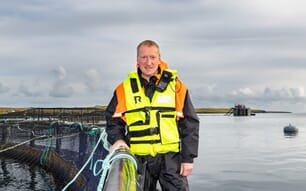The rice eel, locally known as "kiwet," has been a predicament of rice farmers and fishpond operators of the said region, particularly in the provinces of Nueva Vizcaya and Quirino since 2011. These non-indigenous fish species, which grows 25cm to 40cm into adulthood, reportedly destroys rice paddies by burrowing themselves in the soil, loosening its composition and causing water irrigation to leak off.
Like another invasive species, the knife fish, the rice eel is also a voracious predator, which, feeds on frogs, snail eggs including other fishes and shrimps, thereby posing a serious threat to the country’s native fish species. Its origin remains unclear up to now. Reports have indicated, however, that while the common eel is native to the Philippines, the "kiwet" might have been introduced here from abroad for commercial breeding for home aquariums and eel farms for food.
To address this problem, BFAR Region 2 has initiated the development and processing of the rice eel into a value added product. The bureau has also developed an efficient and environment-friendly fishing gear which enabled farmers to increase the catch per unit effort (CPUE) by taking advantage of the nocturnal hunting behavior of the animal.
"These initial efforts combined with the entrepreneurial skill of several international fish trading companies that are now exporting the fish live in Asian countries, have turned this "pest" into valuable fish," BFAR Director Asis G. Perez said.
Two years following its massive infestation, the country is now profiting greatly from the said fish species, bringing in an estimated amount of Php517 million in export value from January to June this year. Current projection indicates that indicates that Region 2 alone is likely to produce over One Billion Pesos worth of export at the end of 2013.
Mr Perez said that the Bureau is currently conducting an inventory of areas where rice eels reportedly thrive as it plans to implement in these areas the same government intervention. He stressed however that the Bureau is not and will not be promoting the transfer or introduction of rice eels in other parts of the country pending appropriate scientific evaluation.
"At the moment, our action is confined to making the best and most beneficial use of rice eel in places where its current population exists," Mr Perez said.




